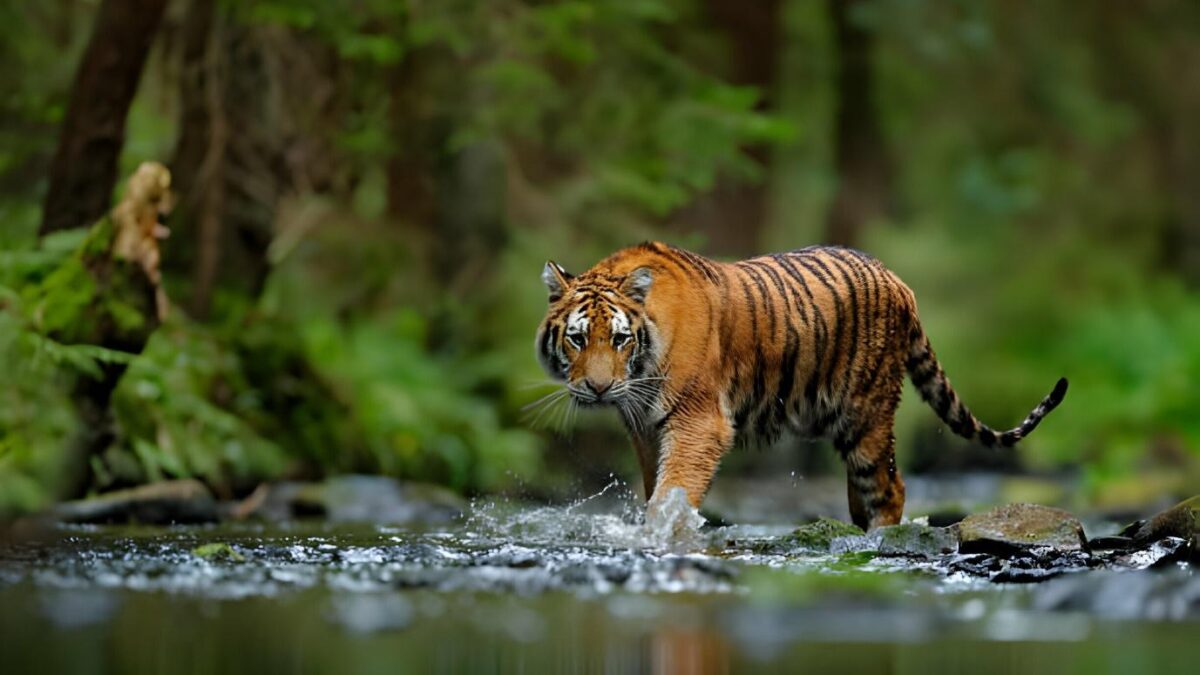The fiery orange coat displaying bold black stripes brings a picture of the majestic creature before your eyes – The Tiger. Unfortunately, their survival rate is decreasing at a high rate.
These creatures used to roam freely across the vast Asian landscapes, but are experiencing huge pressure, which has led to the tragic extinction of some specific species.
Historically, nine distinct tiger subspecies roamed Asia, and each one adapted to its specific habitat.
The ones that are endangered include –
- The majestic Siberian [Amur] wild cat is the largest cat species that stalks the snowy wilderness. With its thick fur, the wild striped cat confronts the sub-zero temperatures of the Taiga [land of little sticks].
- The vague South China majestic wild cat thrives in dense bamboo forests.
- The Bengal wild cat is India’s national animal that rules the grasslands. With its excellent swimming skills, the stripped wild cat navigates the flooded Sundarbans.
- The Malayan stripped cat is found lurking in the Malay Peninsula.
- The Indochinese wild cat is the national animal of Myanmar. They roam across the mountainous and hilly regions in search of prey.
- The Sumatran striped wild cat is the smallest species and is native to the Indonesian island of Sumatra.
Tragically, three subspecies of striped wild cats have been the victims of habitat loss and relentless poaching.
They have vanished forever –
- The Caspian
- The Javan
- The Balinese
Reasons for endangerment of wild cat species
The Wild striped cats are becoming extinct because of –
- Human settlements and agricultural land invade their territories, so the wild creatures lose hunting grounds and vital passages for movement. Deforestation is the major threat, which has shrunk their range of habitat and movement by over 90%.
- Poaching for body parts is driven by traditional medicine and illegal wildlife trade. It remains a constant threat.
- Human-wildlife conflict over livestock predation further complicates their survival.
Conservation efforts:
The dwindling tiger population has made people aware, and steps are being taken to control this challenge.
International organizations like the World Wildlife Fund (WWF) and governments of countries with wild cat species have joined forces in the Tx2 conservation initiative.
Their aim is to double wild striped cat’s numbers, but it needs a collaborative approach from the world.
- Habitat protection:
Establish and expand protected areas like national parks and tiger reserves to provide these magnificent creatures with safe havens. Corridors connecting the disjointed habitats must allow them to move with ease.
- Anti-poaching efforts:
To fight poaching and destroy the illegal wildlife trading network, it is necessary to increase law enforcement, patrolling, and community engagement. Technology like camera traps and DNA analysis helps track poachers and strengthen prosecution.
- Engage the Community:
Local communities living alongside tigers play a vital role in conservation success. Make them aware and interested in protecting the wild cats and their habitat.
- Lower the Demand:
Awareness campaigns and choice of alternative therapies will reduce the demand for tiger products in traditional medicine. It will help to curb poaching.
Remember, the future of the wild black-striped cat lies not just in protected areas but in the collective responsibility of each individual to safeguard these magnificent creatures and their habitat.
Related posts
Recent Posts
Advertisement


